With the news that IndyCar is offering $5 million to any outsider who turns up and wins the season finale at Las Vegas this year, we look back at the top ten drivers who have won on both sides of the Atlantic
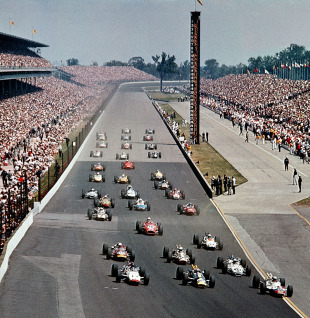
- Drivers:
- Mario Andretti
- |
- Jim Clark
- |
- Emerson Fittipaldi
- |
- Dan Gurney
- |
- Graham Hill
- |
- Nigel Mansell
- |
- Juan Pablo Montoya
- |
- Peter Revson
- |
- Jackie Stewart
- |
- Jacques Villeneuve
Jim Clark
Leading a British invasion of America's premier motorsport event in the mid-1960s, Clark came close to victory at the Indianapolis 500 twice before becoming the first foreigner to win the race for over five decades in 1965. Driving a purpose-built, mid-engined Lotus, Clark finished second in 1963 behind home hero Parnelli Jones, much to the dismay of Colin Chapman who complained that Jones should have been black flagged because oil was spewing from the back of his car. In 1964 Clark took pole and was locked on for victory until he lost control on shredded tyres on lap 47. The following year the new Lotus 38 addressed the tyre wear issue and Clark was unbeatable, crossing the finish line five miles ahead of his closest rival. The Brits had beaten the Americans at their own game and with it came a £75,000 prize fund - the biggest in motor sport at the time - as well as the kisses of "a mob of Indiana beauties" for Clark in victory lane.
Graham Hill
Hill followed up Clark's 1965 victory with another British triumph in 1966, becoming the first driver to win the Indy 500 at his first attempt. Driving a Ford-powered Lola, Hill avoided an early pile up and took the lead in the last 100 miles when race leader Jackie Stewart retired with a broken scavenge pump and Clark spun on worn tyres. After the race Hill said: "The car ran beautifully. I had a very uneventful run and I did not get involved in the trouble at the first start. I was pretty busy avoiding bits of cars flying about. I was right in the middle of those cars, but I got through all right." He returned to Indianapolis in 1967 and 1968 but didn't come close to repeating his 1966 triumph. However, the 1968 entry was of note as it was in a gas turbine Lotus 56 with 4WD - two innovations that were quickly banned by the governing body USAC.
Jackie Stewart
After narrowly missing out on the Indy 500 in 1966, Stewart returned to the USAC series later that year alongside his friends Clark and Hill to win a race of his own. However, it didn't carry anything like the same level of prestige as it was a non-championship event held outside the USA at Fuji Speedway in Japan. At the wheel of another Ford-powered Lola he led Bobby Unser across the line, the only other driver to finish on the same lap. He returned to Indy in 1967 only to suffer a blown engine after qualifying 29th.
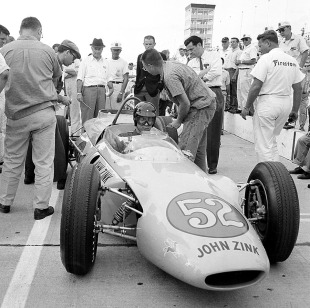
Although he's the first American on the list, Gurney actually cut his teeth in European endurance racing and Formula One before he entered his first Indy 500 in 1962. In 1963 he drove a Lotus alongside Clark at the brickyard and finished seventh, but after winning the French Grand Prix the previous year with Porsche, it was clear his heart was set on building a career in F1. In 1965 he set up All American Racers alongside Carroll Shelby and the pair set about a two-pronged attack on both F1 and Champ Cars. The product was the Eagle single-seater which took Gurney to several victories in USAC, although he missed out on the Indy 500 twice finishing second in 1968 and 1969. He also drove an Eagle to victory at the Belgian Grand Prix in 1967 before the team withdrew from F1 the following year.
Peter Revson
Another American driver who was more inclined towards Formula One than his native racing series. A wealthy heir to the Revlon cosmetic empire, he started out in F1 in 1964 driving for Reg Parnell, but a string of bad results saw him demoted to F2 and F3. He started taking on the odd race in the USA in 1966 and by 1969 took his first victory at the second heat of the Indianapolis 200 at the wheel of a Brabham. He joined McLaren's USAC team in 1970 and in 1971 took pole at the Indy 500 but missed out on victory behind Al Unser. Meanwhile he had worked his way back into F1, also with McLaren, and won two races in 1973. But despite his new found success he was only offered a drive in the third car in 1974 and he opted to join Shadow. Tragically he was killed during testing for the third race of the season when his suspension broke and pitched him into Kyalami's barriers at 160mph.
Mario Andretti
The most successful Champ Car driver on this list and a Formula One world champion to boot. Andretti won the USAC series at his first attempt in 1965 and followed it up with eight wins the following season and back-to-back titles. A third championship and his first Indy 500 victory followed in 1969, but by that time he had broken into F1 with a handful of races for Lotus. By 1971 he'd won his first F1 race with Ferrari, and remarkably he continued to race and win on both sides of the Atlantic throughout the 1970s. In 1978 he won the F1 world championship for Lotus, before leaving in 1981 after the team's results started to slide. In 1982 he subbed in at Ferrari for the late Gilles Villeneuve and competed in the final two races of his F1 career at his two home grands prix in Italy and the USA. But at 42 he was far from finished and in 1984 won the Champ Car title for Newman Haas, staying on at the team until his eventual retirement in 1994 at the age of 54. Remarkably, at 71 years of age, there is talk of him returning to the cockpit in an attempt to claim the $5 million jackpot at Las Vegas this year.
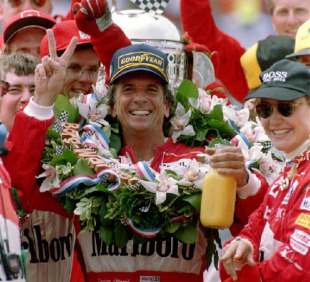
After 11 seasons in Formula One, during which he took two world championships and set up his own team, in 1980 Fittipaldi took a three year break before embarking on a further 13 seasons in Champ Car. He romped to the championship in 1989 and won at least one race every year between 1985 and 1994, including two Indy 500s. Despite his age, or possibly because of it, Emmo was a hard fighter and at the 1989 Indy 500 touched wheels with Al Unser Jr while racing for the lead in the final laps. Unser came off worse and wrecked his car against the concrete barriers at turn three, while Fittipaldi, 42 at the time, impressively held on to his car and won the race as his rival watched from the infield, displaying his respect with two thumbs up. Fittipaldi again caused a stir in 1993 when he celebrated winning the historic race by drinking orange juice - from his personal orange grove - rather than the traditional milk. The snub meant he was booed by fans at the following round in Milwaukee.
Nigel Mansell
It took 13 gruelling years, but in 1992 Nigel Mansell finally secured the Formula One world championship with Williams. The victory was soon soured, however, after he fell out with Frank Williams over Alain Prost's arrival at the team in 1993. Mansell quit but was still addicted to motor sport and secured his fix by signing up with the Newman/Haas Champ Car team for the following season. Still in his prime, Mansell arrived on the US scene in dramatic style, taking pole position and a win in his debut race. Despite a huge accident at his second race, he proved a natural and took four wins on ovals - an incredible achievement for a driver making a crossover from F1. His crew chief Jim McGee explained the secret to Mansell's success: "He was always quicker on the straightaway, even when we gave him some of the worst engines, and it was because he was able to straighten the car out by doing a lot of turning down in the middle of a corner so the car would come off really straight and the rpm would naturally be up because you weren't scrubbing off any speed." Mansell went on to win the 1993 championship, becoming the only driver to win back-to-back titles in both F1 and Champ Car). But his relationship with almost everyone in the sport soured in 1994 as he struggled in a less reliable car and became far too bolshie off track for the American fans' taste. His team-mate Mario Andretti said: "I had a lot of respect for him as a driver, but not as a man." He stuck it out for the rest of the year but also drove four races for Williams in F1, winning the season finale in Australia. In 1995 he left the US to return to F1 with McLaren, but he didn't fit in the car and after two lacklustre performances retired for the final time.
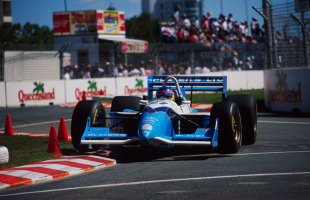
After being crowned champion in both CART and F1 in the space of three years, Villeneuve was considered to be among the top racing drivers in the world. His fall from grace was painful to watch as a series of poor career moves saw his stock fall dramatically. It was a far cry from the hype, partly fuelled by his surname, that had followed him ever since he burst on to the Champ Car scene with a second place at the Indy 500 in 1994. The following season he won at the brickyard and went on to become champion, catching the eye of Frank Williams in F1. After a solid debut year the F1 championship followed in 1997, marking a high point in his career. In 1999 he joined BAR on the advice of his manager Craig Pollock, but took just two podiums in five seasons and was replaced by Takuma Sato at the end of the season. Since his last F1 race in 2006, where he was replaced by Robert Kubica at BMW, he has made several attempts to break back into F1 and stayed race fit with outings at Le Mans - including a second place in 2008 - and the odd NASCAR race. It remains to be seen whether $5 million will be a big enough incentive for his career to turn full circle and initiate a return to IndyCar this October.
Juan Pablo Montoya
Montoya took the Champ Car title at his first attempt in 1999 with an impressive seven wins, but in truth was simply killing time until a Williams race seat became available in F1. After he stormed to the F3000 title in 1998, Frank Williams stuck a testing contract under his nose and Montoya eagerly signed. But with Alex Zanardi and Ralf Schumacher under contract for that season, the Colombian was shipped off to the USA to polish his skills. At the time the Indy 500 was part of the IndyCar championship and in 2000 he joined the seasonal migration of Champ Car drivers to the rival series to enter as a one off. He duly won, putting his talent was on show for the world to see, and on the very same weekend Williams announced he would be replacing Jenson Button in 2001. In his rookie year in F1 he won at Monza, but really turned heads with a feisty overtaking move on Michael Schumacher at the third grand prix in Brazil - a race he could have won had he not clobbered a backmarker later on. Three more wins followed with Williams but a series of foul-mouthed tirades over the pit-to-car radio were not appreciated and, despite winning his final race with the team, he left for McLaren with a bitter taste in his mouth. But the atmosphere at his new teams was just as tense and, despite three wins in 2005, he left under a cloud midway through 2006 after taking team-mate Kimi Raikkonen out of the US Grand Prix. NASCAR beckoned and in 2007 he won his first race in the Sprint Cup at Infineon Raceway . Of all the drivers on the list he is the most likely to return to IndyCar at Las Vegas.
Laurence Edmondson is an assistant editor on ESPNF1
© ESPN Sports Media Ltd.
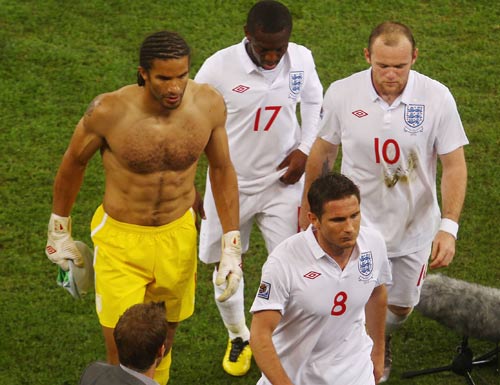 Laurence Edmondson is deputy editor of ESPNF1 Laurence Edmondson grew up on a Sunday afternoon diet of Ayrton Senna and Nigel Mansell and first stepped in the paddock as a Bridgestone competition finalist in 2005. He worked for ITV-F1 after graduating from university and has been ESPNF1's deputy editor since 2010
Laurence Edmondson is deputy editor of ESPNF1 Laurence Edmondson grew up on a Sunday afternoon diet of Ayrton Senna and Nigel Mansell and first stepped in the paddock as a Bridgestone competition finalist in 2005. He worked for ITV-F1 after graduating from university and has been ESPNF1's deputy editor since 2010

